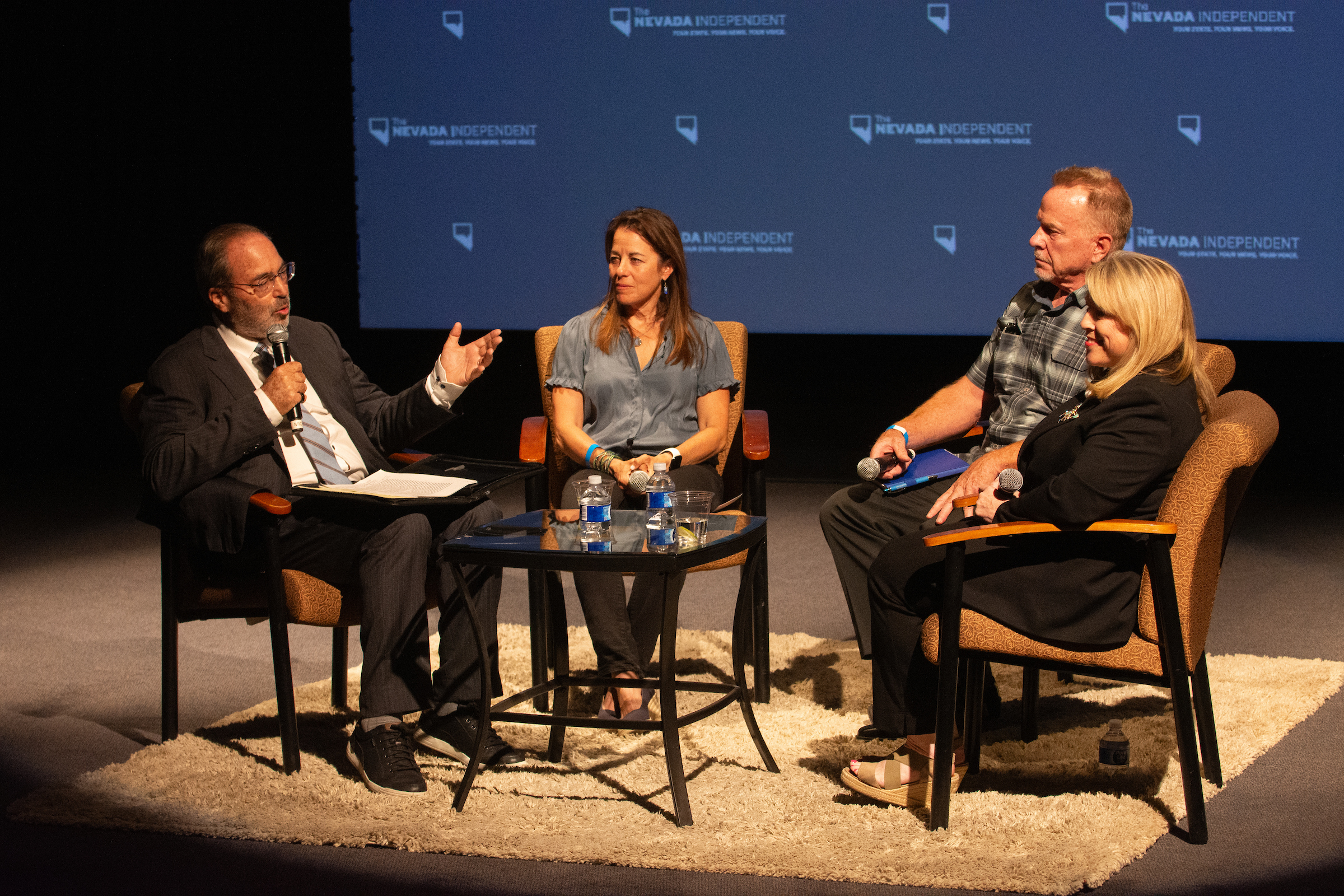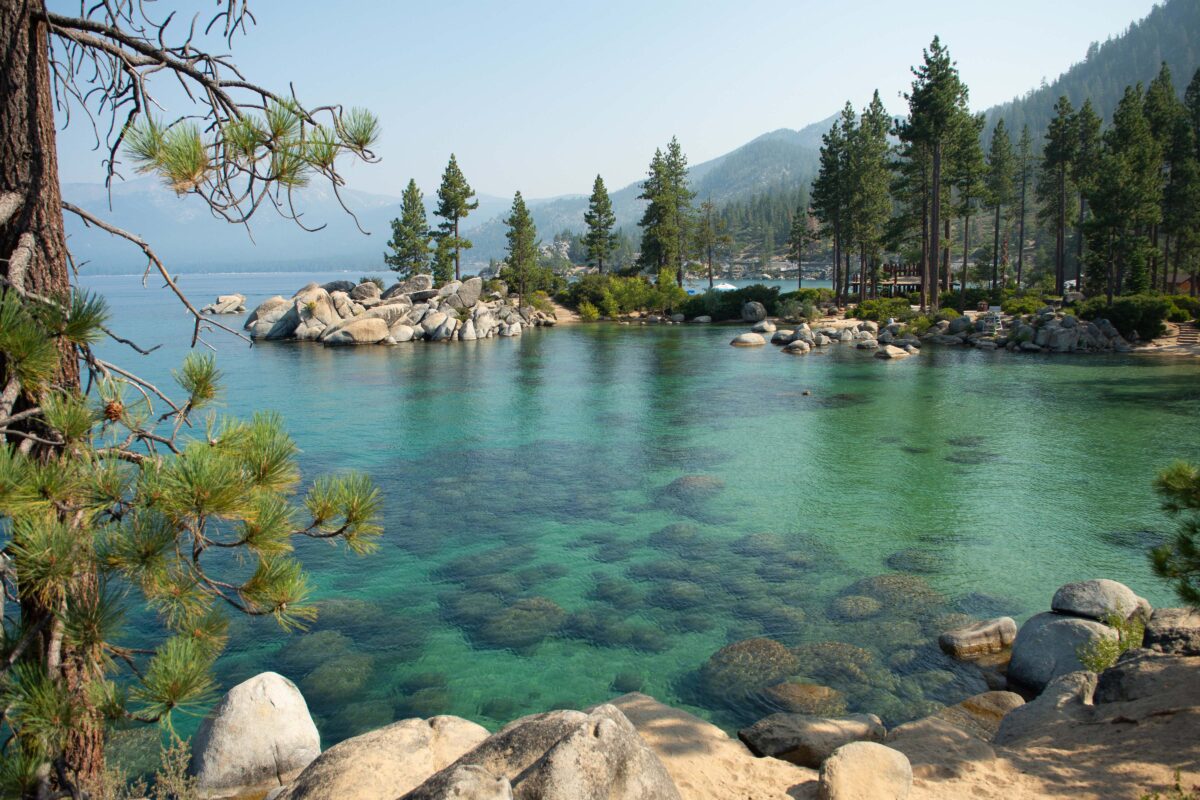Indy Environment: Tahoe’s greatest challenges? Managing transportation and tourism

Good morning, and welcome to the Indy Environment newsletter. I'm Amy Alonzo, the environment reporter for The Indy.
“Everyone loves Lake Tahoe.”
That’s how Tahoe Regional Planning Agency (TRPA) Executive Director Julie Regan kicked off a panel discussion last week with other Tahoe leaders and Indy CEO/Editor Jon Ralston.
Superlatives can be tricky — there is likely at least one curmudgeon out there who doesn’t love the lake — but visitation numbers to Big Blue (more than 15 million visitors per year) indicate that Regan is correct.
With that love come challenges, as Regan, Tahoe Fund CEO Amy Berry and Travel North Tahoe Nevada President and CEO Andy Chapman shared during the IndyTalks event in Reno.
There are also teams of people working to address those challenges. Because, with no way to restrict access to the Tahoe Basin, it’s unlikely that Lake Tahoe will see any less love in the near future.
As always, we want to hear from readers. Let us know what you’re seeing on the ground and how policies are affecting you. Email tips to me at [email protected].
To get this newsletter in your inbox, subscribe here.

The future of the Lake Tahoe Basin reflects the lake’s famously blue waters — sometimes startlingly clear, sometimes a bit murky.
Spanning five counties and two states, the lake is one of the most heavily visited tourist attractions in the nation. Because it covers such a large area and remains extremely popular, everything from efforts to control aquatic invasive species beneath the lake’s surface to the policies in place to safely shuttle and corral the millions of people flocking to its beaches and mountains can be challenging and controversial.
Regan, Berry and Chapman sat down with The Nevada Independent editor and CEO Jon Ralston Sept. 4 at an IndyTalks event in Reno to discuss all things Lake Tahoe — water clarity, affordable housing, wildfire escape plans, development and traffic.
The panelists lead groups and agencies that at times are as controversial as the lake’s management. TRPA, an agency Regan described as created to “stop rampant unplanned development,” was sued earlier this year by an environmental group that alleged the agency was allowing development too dense for the Tahoe Basin.
TRPA is “the agency everyone loves to hate and hates to love,” Regan said, jokingly adding that one of the few things people might hate more than TRPA is sitting in Tahoe traffic.
The main takeaway from the panel discussion was that management of Lake Tahoe is complicated, with no issue standing alone — increased visitation leads to traffic; more traffic leads to declines in water clarity and fears about safe wildfire evacuations.
One thing the panelists agreed on? Concerted efforts need to continue to be made to preserve Tahoe’s environment.
“If we lose our environment, we lose our economy,” Berry said. “We lose our community.”
Transportation, visitation and wildfire fears
Visitation to national parks has increased more than 25 percent since 2010. And while Lake Tahoe isn’t a national park — efforts were made multiple times around the turn of the 20th century to designate it as one, but even back then, Tahoe was pegged as too developed — each year, its visitation is greater than that of Yellowstone and Yosemite national parks combined.
A study released in April by Georgia Tech’s School of Economics found that national parks with high levels of social media exposure have seen their visitation grow even more rapidly. Tahoe falls under that umbrella — Big Blue is the most Instagrammed lake in North America, with more than 3 million posts using the #LakeTahoe hashtags.
The COVID pandemic added to the wave of Tahoe visitation, Berry said. With no way to close the Tahoe Basin to visitors, “it became a refuge,” she said.
In 2020, a counter used to measure the number of hikers on a trail registered more visitors in April — a month typically considered part of the lower visitation shoulder season — than it had the previous July.
“It was a very anxious time,” Berry said, “And here we were filling up. It was just chaos.”
With 15 million visitors each year, the largest challenges in the basin are in managing the sheer number of people and how to move them around, Chapman said.
“Transportation is really the issue we have to figure out,” he said. “How are we getting people into the basin without their cars, and how are we getting them around the basin without their cars?”
The amount of traffic heading into the Tahoe Basin doubles on a 100 degree day in Sacramento or Reno, Regan said.
Projects such as the not-yet-completed $80 million to $100 million East Shore Trail that runs along State Route 28 and includes a yet-to-be-built 250-space park and ride at the top of Spooner Summit are among the attempts to reduce that congestion and provide a better visitor experience and an enhanced quality of life for locals, the panelists said.
The East Shore Trail has been criticized because of its price, but it’s not just a bike path, Berry said. “It’s a transformation of the [highway] corridor. It’s really about a safety improvement.”
With several popular beaches, Highway 28 along Tahoe’s northeastern shore has been a problem spot for years, with people parking on the sides of the highway, sometimes illegally, with parts of their vehicle blocking the roadway. Traffic is notorious outside the entrance to Sand Harbor State Park, the most popular state park in Nevada, with hundreds of cars backed up along the highway waiting to get in.
It’s that type of congestion that leaves some locals feeling unsafe in the event of an emergency.
A recent study compiled by a Tahoe nonprofit group led by a retired battalion chief (who has requested that TRPA’s funding be suspended) used artificial intelligence to simulate wildfire evacuation scenarios. With projected evacuation times longer than those estimated by Tahoe officials, it sparked concern among some residents.
But the study failed to utilize an important source of information, the panelists said — current local fire experts.
No members of the Tahoe Fire and Fuels Team — a group of local, state and federal experts — were consulted in the making of the study, panelists said.
“We would defer to fire experts in the basin,” Regan said.
Instead, unofficial studies such as the one released by the nonprofit incite fear in people, Berry said, citing the successful evacuation of South Lake Tahoe three years ago during the Caldor Fire.
“Anyone can do a study, right?” she said. “I feel like that study was just irresponsible.”
More than pointing fingers through an AI-generated study, people should be focusing on how they can best be prepared for wildfires, the panelists said.
“People have to take personal responsibility. We’ve made choices to live in a forest,” Regan said.
The panel discussion also touched on other issues, including the proposed Village at Palisades Tahoe expansion, the number of trees in the basin and a proposed legislative bill that would impose a $4.25 fee on transient lodging to fund transportation projects.

Village at Palisades Tahoe
The conversations about growth and visitation numbers coincides with a controversial decision being weighed by Placer County commissioners on a project that would add a massive high-rise hotel, condos, a theme park and roller coaster at Palisades Tahoe, just outside the Lake Tahoe Basin.
For more than a decade, Alterra Mountain Co., the parent company of Palisades Tahoe, has sought to construct a large-scale development in Olympic Valley. The project has been beleaguered by public opposition and lawsuits from local residents, environmentalists and nonprofit groups.
The project isn’t in the Tahoe Basin proper, so TRPA won’t weigh in on it, Regan said, but “it’s unrealistic to think people visiting Palisades won’t be visiting the lake.”
Too many trees
The basin is also plagued by a problem many people have never considered, Berry said.
It has too many trees.
The east side of the Tahoe Basin was clear cut in the 1860s to feed the Virginia City mines. As the basin’s trees grew back, she said, they filled in at the same time, creating a uniform forest of trees all roughly the same age. Now, there are roughly 22 million excess trees in the Lake Tahoe area, she said.
“Everyone knows the story of the Donner Party where they drove their wagons through the forest. Now, you can barely ride a bike,” Berry said.
Efforts to thin those trees and clean up dead underbrush are steady but slow. Anywhere between 3,000 and 5,000 acres of forest are treated each year, but with 220,000 acres in the Tahoe Basin, that’s not fast enough, she said. Roughly 90 percent of the Tahoe Basin is public land, and the majority of that public land is managed by the U.S. Forest Service.
“We’re going to be on a hamster wheel forever if we don’t figure out how to kick that into gear,” she said.
Transient occupancy surcharge
Next legislative session, TRPA is planning to bring forward a bill asking lawmakers to consider a $4.25 nightly surcharge on transient lodging in the Tahoe Basin. Twenty-five cents would go to the Tahoe Science Advisory Council and $4 would stay with the Tahoe Transportation District.
“It takes money to take care of the people who visit Tahoe,” Berry said.

Here’s what else I’m reading (and listening to) this week:
An expansive explainer from my coworker Gabby Birenbaum about the effects the Inflation Reduction Act has had, and could continue to have, in Nevada.
Nevada lawmakers will consider “use it or lose it,” expanded water rights retirement program bills next session, the Nevada Current reports.
